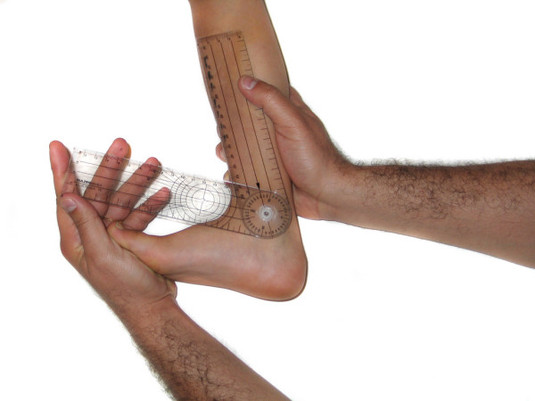Ankle dorsiflexion: Injury prevention for jumper’s knee?

Explosive jumping, in sports such as volleyball and basketball, expose the patellar tendon to significant strain (forces in excess of 6-8X a person’s bodyweight!). The highest stress to the patellar tendon occurs during the landing phase where the entire lower limb must dissipate the ground reaction forces. The ankle plays a critical role in softening a landing, responsible for almost half of the total kinetic energy absorbed at impact. The degree of dorsiflexion (along with strength of the plantar flexors and landing technique) has been implicated as a key component of shock absorbance during landing.
A recent prospective study in a group of Swedish elite junior basketball players provided evidence that limited dorsiflexion is a risk factor for developing patellar tendinopathy (jumper’s knee). The study followed 75 players over the course of a year. 12 players developed patellar tendinopathy during the year and those players had significantly less dorsiflexion at baseline. The players with reduced dorsiflexion (measured cut off of 36.5 degrees in this study) had a 10X greater risk of developing patellar tendinopathy compared to those with adequate ankle dorsiflexion. So the logical next question is does improving functional dorsiflexion reduce the risk of developing patellar tendinopathy? We await this investigation with optimism!
The theory of limited dorsiflexion possibly increasing the risk of sustaining patellar tendinopathy is a simple compensation rationale. If the ankle is a key shock absorber for jump landing, but poor dorsiflexion reduces its capacity to soften the landing then the knee, and more specifically the patellar tendon, will be responsible for energy absorbtion.
Inadequate dorsiflexion, or restricted dorsiflexion, is a common clinical finding. It can occur due to tension from the calf muscles, stiffness from the ankle joint itself (ankle mortise joint predominantly) or secondary to a previous ankle injury (ie. sprained ankle). The range of dorsiflexion can be improved by a variety of manual therapy techniques. To see how functional ankle dorsiflexion can be assessed and treated check out the video below.
